The Van Morrison Master Class: Week 9
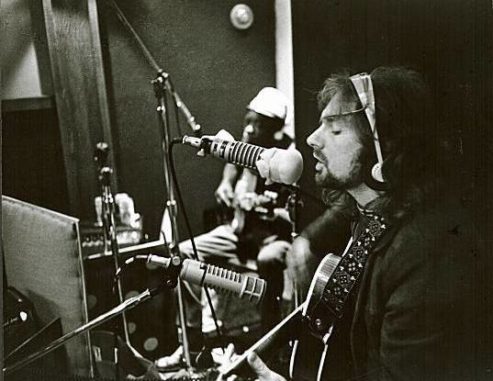
Here’s another series of retrospectives on the life and career of Van Morrison.
“I write songs. Then, I record them. And, later, maybe I perform them on stage. That’s what I do. That’s my job. Simple.”
THE VAN MORRISON MASTERCLASS: WEEK 9
DAY 57: “No Religion” (1995)
Van Morrison may be the most religious and spiritual muse in pop music history. I don’t think that’s an overstatement.
His spiritual and religious quest is deeply authentic. His thoughts on religion have changed drastically over the years, and are reflected frequently in his music and verse. Influenced heavily by the sounds of gospel early on, many of Van’s songs display his own soul searching and a quest for inner peace. Never one to preach, his music nonetheless resonates with believers and non-believers alike. To this day, he sometimes pops into church services unannounced and performs a song, or two — to stunned listeners watching an absolute legend in the music business sing and strum a guitar.
Van’s religious persuasion in the 1960s and 1970s was typical of the time and the culture. However, he was never self-indulgent like other popular rock acts of the day. Van’s curiosities began with Astral Weeks (1968) and have been a steady pursuit ever since. From “Into the Mystic” to “No Religion,” one of the qualities that makes him so interesting and endearing is his willingness to be brave and sometimes wrong in sharing his thoughts on divinity.
Consider Van’s brief flirtation with Scientology in 1983, when he dedicated the Inarticulate Speech of the Heart album to guru-madman-charlatan L. Ron Hubbard. That stain did not age well. Much of his studio work during the 1980s and 1990s imitated his greater spiritual aspirations and reflected a burning desire to know more. All one must do is look at the titles of his albums, including Saint Dominic’s Preview and Enlightenment and Beautiful Vision and No Guru No Method No Teacher and Hymns to the Silence and The Healing Game. Religion, spirituality, and mysticism are pillars in Van’s musical canon.
Van’s songs on spirituality are among his most powerful and deeply moving. Who can deny this? “No Religion” is among his catchier and lighter compositions, marked by a foot-tapping beat, echoing vocals with a backup singer, and absolutely brilliant lyrics. This isn’t an anti-religion song, at all. Rather, the uplifting “No Religion” is one of those poetic puzzles open to broad interpretation. Van, always coy interviews about the meanings of his songs, gruffly says, “of course it’s open to interpretation — that’s the whole point, isn’t it?”
We didn’t know no better, and they said it could be worse
Some people thought it was blessing
Other people think that it’s a curse
It’s a choice between fact and fiction
And the whole world has gone astray
That’s why there’s no religion, no religion, no religion here today.
“No Religion” is from the Days Like This album, released in 1995.
.
DAY 58: “Allow Me” (1987)
Van Morrison has composed some extraordinary instrumentals. One of his best songs is off of the self-produced Poetic Champions Compose album, which included three new instrumentals among the 11 total tracks. Many critics at the time didn’t like the personal and musical metamorphosis, leading Van to become even more bitter and resentful. Rolling Stone magazine dismissed the album as “mood music” emblematic of Van’s “slump” during the mid-1980s.
I don’t see this period as a slump at all, but rather a compulsory transformation galvanized by maturity. By his 42nd birthday, Van wasn’t destined for the oldies tour. He steadfastly refused to become a nostalgia act, jumping around a stage like James Brown or Mick Jagger, both well into their own mid-age crisis. Even the cover photo shows Van, not as the rock icon from his earlier days. He’s no longer that Van — nor in appearance, not in character, not in live performances, and certainly not in terms of his music. This is the look of someone with no regard for how he’s perceived. He is his own toughest critic.
Instead, Van turned deeper within himself. He continued pushing musical boundaries and writing new material. Van also expanded further in his selection of instruments. Each album between 1987 and 2012 — an astonishing 25-year period — seemed to be very different from the last, darting from jazz to soul to country to folk to R&B to Celtic, interspersed with the occasional live album, various covers and tributes, as well as collaborations.
“Allow Me” closes the Poetic Champions Compose album, which was recorded in London. The song is almost extinct so far as any reference points or known background material. Van rarely if ever performed the track live in concert, which certainly would have surfaced had it been done. Accordingly, as best as I can conclude, this is yet another nearly-forgotten treasure. Neil Drinkwater, a session pianist is wonderful, but Van steals the song with his work on the alto sax.
Here, allow me…..
.
DAY 59: “When I Deliver” (1975 — Unreleased Bootleg)
A fundamental element of this ambitious project is making new discoveries. When digging, one never knows what’s unearthed. Not only are we venturing far beyond the customary hits, but sporadically, we also discover songs that were never included on any Van Morrison compilation. Accordingly, these “lost tracks” have been heard by only a small number of listeners.
Consider two shelved albums from Van during 1975 which never made the transition from rough studio cut to vinyl to radio airplay. Mechanical Bliss, an amazing 10-track album was inexplicably shelved, presumably at Van’s direction. These hidden gems were forgotten. Until now.
The Genuine Philosophers Stone is a three-disc bootleg series of outtakes from Van’s most prolific period as a singer-songwriter, when his plethora of studio and live recordings simply could not fit on the commercial album space intermittently released by record companies. The thing was and is, musicians don’t work according to the strict confines of a timetable. Such pressures are the basis of resentment. Instead, when the music just flows, it’s time for Van to dart into the studio, assemble a few musicians, and let the magic happen.
That’s precisely what occurred in mid-1975 when Van’s recording contract called for a new album release, to which the unpredictable and incontrovertible Northern Irishman basically told the record company they’d have to wait until *he* was satisfied with the release. Ten years earlier, Van had been bombastic at the release of his first solo album (Blowin’ Your Mind in 1967) totally without his consent. Resentful of record companies (even to this day), Van took glorious joy in his revenge, accusing the business side of indifference to artist pursuits. He made them wait, and was summarily dropped from his contract. And so, Van shelved two albums that had been set for release in 1975.
The good news for us “Vanatics” is, these recordings are now buried treasure awaiting discovery. Many of the best-quality tracks ended up on the astounding 1998 double-album release of spurious outtakes, The Philosophers Stone. However, quite a few of these hidden gems never made it to the public’s ears.
Here’s a marvelous recording that has a definitive R&B feel, written by Van, titled “When I Deliver” Notice the track seems to start off with an uncertain sense of direction and then finds a groove about 90 seconds into the 6-minute song. Even the timing changes. Some lyrics appear to be spontaneous. Van, on vocals, also inserts some harmonica. It’s a fascinating glimpse into Van’s free-flowing creative process. Too bad this song wasn’t polished and crafted into a release. It’s got a nice soulful appeal that reflects Van’s deep connection to R&B.
Go ahead. Take six. Have a listen to this unreleased recording from the back corner of Van’s musical vault.
“Let’s do that again, that feels good…..”
.
DAY 63: “The Healing Game” (1997)
Two of Van Morrison’s most powerful songs are about healing and include the word in the song title — 1979’s “And The Healing Has Begun,” and “The Healing Game,” the title track from the 1997 album.
The Healing Game is a concept album built on street singing. Just as many American cities produced street harmonies from the 1950s through the era of “Boy Bands,” kids hanging out on corners, singing late at night, Belfast (Northern Ireland) also had a thriving street music scene. Van was a part of that as a teenager. The primary sound to come out of this movement was something called “Doo-Wop.”
Doo-Wop can be heard throughout The Healing Game, including the title song. This is among Van’s most thorough compositions. It starts slowly with the Hammond organ (Van’s trademark sound of this period) and builds into a wall of sound. Not so much music as a transformative experience, Van floods the microphones with love and spirit.
The horns, and specifically two sax solos steal the song. If you’re into horns, this is about as great as it gets. Check out the crescendo of horns in this song and note how they blend into the melody as the volume gradually rises and the scene becomes something more akin to a gospel choir.
This live track of “The Healing Game” was recorded in 1999 at Rockpalast in Germany. This was the American Bandstand of Europe, which was seen by 25 million viewers a week. Just about every major rock act of the day appeared at one time or another on Rockpalast. Note the video quality isn’t great, but the audio is just fine. Listen to those horns!
Van did many versions of “The Healing Game,” which is texturally rich and complex and allows the opportunity for spontaneity. Also, note that Candy Dulfer on the sax. She’s fabulous.
“The Healing Game” is an astounding musical composition, and one of the rare tracks that’s actually better in a live setting, as this video shows.
“Sing it out loud!
Sing it in your name!
Sing it like you’re proud!
Sing the Healing Game!”
.
DAY 61: “Help Me” (2010)
Van Morrison has never recorded “Help Me” in-studio before, which is odd because it’s one of his favorite songs to perform live in concert. The Sonny Boy Williamson II classic was first released in 1963. It’s set to the standard 12-bar-blues contour, a familiar chord pattern and song structure, which is the basis of so many great blues recordings.
Van has frequently performed “Help Me” in recent years.
One of his better shows took place about ten years ago during the BBC Four sessions, with a stellar band and enthusiastic live audience. Van’s vocals are as strong as ever in this show, but the most interesting elements are his sax intro and interlude later on the harmonica. Van frequently plays assorted instruments, both on his recordings and during his live shows, but rarely do we see him doing all three — vocals, sax, and harmonica — all within the same track.
This entire performance is among his better engagements in the past decade. I’m not a fan of his recent shows (nothing since 2012 has impressed me), though it’s hard to be critical of someone who has written such an extraordinary catalog of songs and continues to evolve as he releases new material (four new albums in the past three years).
Van can be tempestuous while onstage. You never know what you’ll get. So many of his live shows are filled with spontaneity, which can be a double-edged sword. Most of the audience prefers to hear Van sing his classics in the way they were originally written. Dismissive of all expectation, Van often wanders off on tangents trying his best, it seems, to make the hits sound as different as possible. As one can imagine, this upsets and disappoints a sizable percentage of most audiences.
Even during this performance, which was a live telecast on the BBC, we witness moments with Van turning to various members of the band and barking out instructions. We also hear Van’s customary “grunts” and “yeah’s” which are genuine moments of satisfaction from the most cantankerous of singer-bandleaders.
Well worth a listen and a viewing. Check out Van doing the Sonny Boy Williamson II classic, “Help Me.”
.
DAY 62: “And the Healing Has Begun” (1979)
We all suffer loss. We all feel pain. We all endure hardship. We all long for recovery. We all need to heal.
And so, the healing has begun.
Van Morrison’s gifts to us are his transparency and vibrancy. Somehow, he’s able to seize the most common human emotion of all, the sorrow of loss, and magically uplift us with a simple lyric and catchy melody. Among his most evocative songs of recovery comes from the 1979 album, Into the Music. The song is titled, “And the Healing has Begun.”
Clocking in at nearly eight-full minutes, the track had no intention of being released as a single, nor receiving any radio exposure, nor even promotion from Van’s live performances. It was released among a three-album flurry of eclectic recordings put out by Van during the peak of the disco era, 1979-80 when he was singing and recording against every contemporary musical current. The stong didn’t stand a chance of critical exclamation nor popular public reception.
Not that any of that mattered to Van.
“And the Healing has Begun” has aged remarkably well over the past four decades. because it’s melody and message remain timeless. The backing violin is stellar, very reminiscent of Van’s earlier period in collaboration with the Caledonia Soul Orchestra, which heightened many recordings from Van’s most creative songwriting period. Van was customarily dismissive when asked about the song many years later. He stated:
“Well, it’s all about healing, isn’t it?….it comes back to this question: what’s your original face? Know what I mean? Who are you really? There are so many different kinds of healing but, if you are in alignment with yourself, then that in itself is going to be healing. If you’re trying to be something other, like something superficial, trying to be someone you’re not, then that would take you away from your true center. Really, if you’re asking about those songs and those albums, then it’s about getting back to the true center within yourself. That healing thing. It was nothing new. Music has always been about healing, hasn’t it?” (Credit: Van Morrison Song Meanings)
Yes, it’s about healing.
Van would end up writing two of his very best compositions about healing. This recording is the first. The other is “The Healing Game,” and album-title track composed some 15 years later.
Far from being a sad song, this emits spontaneous joy from start to finish. Part jam-session, part gospel revelation, and seemingly pure spontaneity, Van has written an elixir of ecstasy.
From whatever pain we need to recover, this song is a salve for our souls.
.
DAY 63: “Linden Arden Stole The Highlights” (1974)
“Cleaved their heads off with a hatchet, Lord he was a drinking man.”
Now for something completely different. “Linden Arden Stole The Highlights” is an obscure track off the Veedon Fleece album. Clocking in at under 3 minutes, it’s a tale burst about a fictional character named Linden Arden, presumably an Irish immigrant in America.
This isn’t a song, so much as poetry. Linden Arden‘s inner demons are revealed when he drinks, and this vice becomes his undoing. Taking the law into his own hands wields weighty consequences.
Scrutinizing the songwriting process can produce more questions than answers. As with the greatest art, melodies and lyrics often flow from the subconscious. Indeed, many of Van’s songs are not written by him at all, at least not consciously, it seems. While onstage, in the studio, and most often while composing when alone, a mystical trance takes over. Inspired by the poets and the bluesmen, he channels the energy and the mysticism in some temporal excavation.
This song is very Irish, very explosive, very unpredictable, very abrupt, very intense, very graphic —– and very, very, Van.
“Linden Arden stole the highlights
With one hand tied behind his back
Loved the morning sun, and whiskey
Ran like water in his veins
Loved to go to church on Sunday
Even though he was a drinking man
When the boys came to San Francisco
They were looking for his life
But he found out where they were drinking
Met them face to face outside
Cleaved their heads off with a hatchet
Lord, he was a drinkin’ man
And when someone tried to get above him
He just took the law into his own hands
Linden Arden stole the highlights
And they put his fingers through the glass
He had heard all those stories many, many times before
And he did not care no more to ask
And he loved the little children like they were his very own
He Said, “Someday it may get lonely.”
Now he’s livin’, livin’ with a gun.”
.




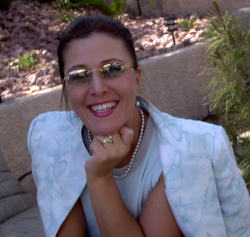

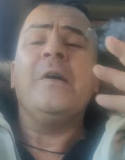
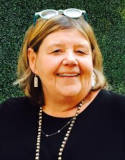

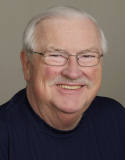
0 Comments
Trackbacks/Pingbacks